Complaints about the state of criticism are a very old story. But nothing I’ve read—from indictments published decades ago by Cyril Connolly, Elizabeth Hardwick, Clement Greenberg, and Gore Vidal to James Wolcott’s evisceration of cultural coverage at The New York Times in a recent issue of Liberties*—can top Ian McKellen’s howl for what we’ve lost, telegraphed through every twist and turn of his performance as the curmudgeonly theater critic Jimmy Erskine in The Critic (2023).
Erskine is no saint. He’s a nasty man. His judgments are belligerently hyperbolic. He turns out to be a blackmailer and a murderer. Nevertheless, I can’t help but see a critique of the hopelessly routinized state of criticism today in McKellen’s turn as a cultivated and abrasive Brit doing battle with newspapers that already in the 1930s, when the movie is set, were replacing criticism with something closer to bland reportage. As he plays Erskine—based on James Agate, a major figure in London before World War II—his manic appetite for gossip, skulduggery, sexual games, and downright dishonesty is all part of some essential commitment to the dramatic arts. Exaggeration is his everyday means of communication. That, as Erskine sees it, is part and parcel of the devilish genius of the theater. He believes in nothing else, his devotion somehow purifying a life that’s anything but. Whatever his sins, he remains the inheritor of Oscar Wilde’s faith in the power of art.
McKellen’s rip-roaring performance taps into a fascination with the task of the critic that in the past decade has inspired quite a few books, from A.O. Scott’s Better Living Through Criticism (2016) to Andrea Long Chu’s recent Authority. There are elements of nostalgia in some of this work. There’s also a sense of good-bye and good riddance, especially when it comes to the disappearance of the kind of critic who in earlier generations functioned as a gatekeeper. You can’t blame younger writers for feeling bitter when they’re scrambling for an ever-diminishing number of magazine assignments, book contracts are few and far between, and there’s little inclination to pay critics real money when the Internet is saturated with opinions available for free. The challenge of distinguishing the few pieces of serious criticism from the overload of mere ratings and reportage has created a chaotic situation that’s the subject of a long, grindingly roundabout discussion of the website Goodreads in Lauren Oyler’s essay collection No Judgment. As for the academic world, where critical theories have long been embraced as tools of scholarly investigation, the variety and apparent irreconcilability of approaches have inspired calls for a lowering of the temperature and a more reasoned discourse in books including Jonathan Kramnick’s Criticism and Truth.
Criticism with the impassioned ferocity that McKellen’s Erskine suggests is still being written. I’ve found it in some of the essays in the literary critic Becca Rothfeld’s first collection, All Things Are Too Small, and in parts of the art historian T.J. Clark’s Those Passions: On Art and Politics. But before I turn to the work of these two very different writers I’d like to push back against what seem to me some general misconceptions about the place of the critic in an open society. Chu, who won a 2023 Pulitzer Prize for her writing in New York magazine, seems to me to misunderstand the nature of the critic’s power, despite the considerable skill with which she traces the history of criticism from Dr. Johnson to the New Critics. I agree with her when she says, in her essay “Criticism in a Crisis,” that “the critic works to ensure that [art] will mean something for us.” But her account runs aground in “Authority,” the title essay in her collection, when she asserts that
the critic has consistently been understood as embodying a key political figure: in the eighteenth century, an enlightened king; in the nineteenth, a free citizen; in the twentieth, a state bureaucrat.
Criticism, she says, “has long been an apprenticeship in thoughtful obedience.” She rejects this situation, announcing that “as a governing concept for criticism, we must admit that authority is an incoherent, inconsistent, and altogether empty thing.”
Chu knows how to spin an argument. She invokes a critical authority that echoes, mimics, or rivals political authority—and then rejects that definition. The problem, as I see it, is that critics, at least the ones who matter, aren’t anything like kings, ordinary citizens, or state bureaucrats. They operate at an angle to society. They’re closer to street fighters than to kings. They’re self-invented. They see things their own way. They make their own rules. They’re tough, willing to commit murder, at least metaphorically, as Randall Jarrell did in his takedowns of poets whose work infuriated him. Over time a critic may acquire followers, a cohort. Pauline Kael had her Paulettes. For a decade or two Clement Greenberg had the ear of nearly every curator of modern art in the United States. When T.S. Eliot offered literary opinions as if they were religious dogma, many English professors responded with a solemnity more appropriate to a church than to the marketplace of ideas. But the power of those critics wasn’t hereditary. It wasn’t grounded in a broad-based cultural consensus. And it couldn’t be passed down to anybody else. For Chu, laser-focused as she is on all the ins and outs of contemporary culture, the stand-alone critical voice may seem a social and cultural impossibility.
Criticism isn’t a search for truth but for a particular person’s truth. I’ve heard critics say they approach each new experience without preconceptions. But criticism involves deep, personal conceptions, what Greenberg referred to as “homemade esthetics,” the title he had in mind for a book he never finished. (It became the title of a posthumous essay collection.) Those homemade esthetics are only the beginning of what a critic needs. Formidable critics are engaged in a dynamic or dialectic, the experience of the moment approached not without preconceptions but with an open mind, and tested against some underlying belief or beliefs, which are aesthetic beliefs. Over time those beliefs may change or evolve. Criticism isn’t a search for an absolute, what some might regard as perfect taste. It’s an experiment in aesthetic experience. This is why we can be excited by critics with whom we have fundamental disagreements. We see how their minds work, and that helps us see how ours work.
Although Greenberg is a critic with whom I have many disagreements, I’m drawn to the boldness of his basic ideas. “Like any other real style,” he announces in one of his later essays, “Picasso at Seventy-Five” (1957), “Cubism had its own inherent laws of development.” These laws, he explains, “by the late twenties…all seemed to be driving toward greater if not outright abstraction.” I flat out reject Greenberg’s assumption that a stylistic evolution can have a force of its own, apart from the artists who are shaping the style. This strikes me as turning artists into pawns in some grand historical game. But in setting up a tension between the will of the artist and certain assumptions about stylistic evolution, Greenberg inadvertently sets in especially high relief the risks that Picasso was taking as he “turn[ed] Cubism into…a grand style full of terribilità like Michelangelo’s.” For Greenberg the tensed, contorted, jam-packed character of Guernica and countless other later works by Picasso is a sign of failure—a refusal to accept a stylistic evolution that would inevitably lead to the abstractions of Piet Mondrian, Jackson Pollock, and Barnett Newman. Where in Picasso’s later work Greenberg sees a failure to recognize the inevitable, I see a fascinating fight with inevitability, which yields new expressive possibilities. We’re seeing the same things, but our aesthetic beliefs lead us to experience them in different ways.
Chu admires Greenberg’s writing. She’s obviously engaged by the writing of many considerable critics. But I think she misjudges the nature of their power, which is in the richness of what amounts to a private dialogue, some general idea they have about the nature of art and art’s place in the world that’s constantly tested against specific experiences. Criticism is aesthetics thrust into the messy present, its essential concerns not entirely different from those that date back to Plato and Aristotle. What is it that makes for a powerful work of literature, music, or art? Does it involve imitating or mirroring human conduct and the natural world, as Aristotle argued? Or does it have something to do with ideal structures and forms, a concept you find in Plato? Or do the arts involve some combination of the two? And if so, what is the combination and how does it operate? And how and why do audiences respond? Criticism isn’t so much a search for truth as a competition between different truths.
All Things Are Too Small is Rothfeld’s first book. She’s in her early thirties and is currently the nonfiction book critic at The Washington Post. The range of essays in her book isn’t all that different from what you find in Chu’s Authority or Oyler’s No Judgment, with some focused on particular books and authors and others tackling broader cultural questions. What Rothfeld has that I find missing in many other writers of her generation is an abiding critical vision, some rock-solid belief that informs everything she does. She rejects the insider’s knowingness that’s all too often mistaken for critical judgment in favor of what the young critic Marius Sosnowski, in a review in Zyzzyva, referred to as a “voluble passion,” but passion grounded in “herculean scrutiny.” Rothfeld believes that artistic experience parallels, mirrors, extends, and magnifies our most visceral experiences. In her first pages she announces that “to want something with sufficient fervor is to want it beyond the possibility of ever getting enough of it.” She regrets that “we cannot be the whole world and can never even ascend high enough to see all of it at once.”
For Rothfeld art is a way of accessing all that immensity. Reading her sometimes reminds me of what it felt like, many years ago, to first encounter Pauline Kael’s work. The title of Kael’s earliest collection, I Lost It at the Movies (1965), was as brash as Rothfeld’s All Things Are Too Small. With both writers the bravado and slangy conversational tone are grounded in an aesthetic of amplitude, a view that art touches on life in multiple ways. Rothfeld would surely agree with Kael when she wrote of movies that they can “affect us on so many sensory levels that we become emotionally accessible, in spite of our thinking selves.”
Rothfeld’s subjects range from movies, including Éric Rohmer’s Claire’s Knee and Howard Hawks’s His Girl Friday, to Sally Rooney’s fiction and the philosopher Simone Weil. The longest essay in her book, which joins a critique of conservative family values with a plea for an open-ended approach to sexual possibilities, goes on too long, with her beguiling hedonism at times feeling a little strained or false. But whatever she’s up to, there’s always an originality about her thinking. Who would have expected Weil, an ascetic fascinated by Catholicism, to inspire reflections on the pleasure of eating, the spiritual and material mixed together, much as for Rothfeld art is on an endless loop with the rest of life. I find it significant that a few years ago she wrote about the aesthetics of the fin-de-siècle author Vernon Lee, who “emphasiz[ed] the corporeal dimensions of aesthetic empathy.” For Lee as for Rothfeld, “the transfer of sentiment from artwork to viewer” is “a physical exchange.”
A critic’s strongest work often involves material that either dramatically aligns with or conflicts with deeply held aesthetic principles. That’s certainly true of what I regard as the best essay in Rothfeld’s collection, “More Is More.” She begins with a critique of the recent fad for self-help books dedicated to decluttering. In the hands of a lesser writer this might be little more than fodder for the style section of some newspaper. But for Rothfeld the idea of decluttering—she cites Joshua Becker, Marie Kondo, and Fumio Sasaki—reduces life to “a survivalist situation,” forcing us to distinguish “between wants and needs.” This violates her essential view of experience, which merges and maximizes wants and needs. From the declutterers she moves to literature and what she refers to as “recent fragment novels,” with their “characters who have discarded all their attachments” and “authors who have dispensed with the contrivances of plot.” Here—as she looks at novels including Kate Zambreno’s Drifts and Jenny Offill’s Dept. of Speculation and Weather—we grasp the broader picture that Rothfeld is drawing. She’s confronting a contemporary attitude—and aesthetic—that violates the essential maximalism to which she believes the arts must be devoted. Art, she implies at the close of this brilliant essay, is something “I want…precisely because I do not need it.”
The essays in T.J. Clark’s Those Passions: On Art and Politics have nothing in common with Rothfeld’s aside from the writer’s abiding belief that informs everything he looks at. For Clark that belief is a Marxism that leads him to argue that it’s “imperative that art connect with politics” even as—and this is where things get interesting—“for art to be political, it has to be art.” Clark is a half-century older than Rothfeld. If her book has some of the attractive scrappiness of a writer who has succeeded in a very challenging literary market, Clark’s exudes the smoothness of an academic long at the top of his profession. In his extended studies—beginning with his work on nineteenth-century French art and, more recently, on Poussin and twentieth-century art—I often find his arguments so prolonged that they run amok. There’s an intellectual self-regard. Clark’s thinking, like that of Michael Fried and Rosalind Krauss, suggests the closed systems of a master who expects to be accepted without question. While I entirely disagree with Clark that there is some inextricable link between art and politics, in some of the essays in the new collection, many written for the London Review of Books, he holds me because he allows his elegantly nuanced Marxism to be challenged by the immediacy of his responses. This Marxist is a hedonist. And a formalist. The result is some exhilarating reading.
Clark is at his best when grappling with the modern painters he admirers most. I can’t agree with Sasha Frere-Jones, writing in Bookforum, that Clark’s essay about Matisse’s portrait of his wife, Femme au chapeau (1905), could be three times as long. I’d prefer if it had been considerably shorter. But I’m engaged—even if not entirely convinced—as Clark links Matisse’s hyperbolic color with an effort to sustain the “qualities of intensity, depth, directness, vividness” that “have been outlawed, or, worse still, vulgarized and commodified” in a modern capitalist society. In some of these essays Clark rejects any easy association between what an artist does in the studio and what’s going on in the wider world. Writing about Pollock, he argues that “the danger, for the critic, lies in one-to-one correlation. ‘Historical context’ sounds comfortingly singular.” Here Clark asserts—the essay is called “Pollock’s Smallness”—that Pollock’s labyrinthine drip paintings aim at “retrieving and dramatizing,” within their own limited dimensions, some sense of the bewildering vastness of modern life and the “inconsolable and indomitable” emotions it can generate. This point isn’t Clark’s alone—Greenberg associated Pollock’s work with the experience of the city, and Clark quotes at length from Parker Tyler’s wonderful essay “Jackson Pollock: The Infinite Labyrinth” (1950)—but as in his essay on Matisse’s portrait of his wife, Clark’s social and sociological thinking is set in a lively tension with his response to what’s right before his eyes.
The strongest essay in Clark’s book, “Art and the 1917 Revolution,” addresses an exhibition at the Royal Academy in 2017 that surveyed Russian art of the early Communist years, 1917 to 1932. I saw that sprawling show, which concluded with what Clark describes as “the small dark room…on the walls of which were projected mugshots of entrants to the Gulag.” What’s remarkable about the essay is the extent to which this independent Marxist, who’s thought long and hard about Russian modernism, embraces his own baffled responses to the ambitious avant-garde artists of those years. At the center of the exhibition was a reconstruction of a room at a 1932 exhibition in the Soviet Union devoted to the work of Kazimir Malevich. Although abstract art had been rejected by the Soviet authorities, the Malevich room was arranged with his early abstractions front and center, flanked by the startlingly simplified figure studies he’d been doing more recently. “This,” Clark writes, “is not what Stalinist art was (or is) supposed to have looked like.” No one exactly knows how the room came to be set up in this way or how it could have been permitted at a time when Malevich was living in poverty, already having endured arrest and interrogation. That 1932 exhibition, a brief triumph of the old avant-garde in the face of the Stalinist catastrophe, fascinates Clark. “I doubt,” he writes, “we shall ever know how much or little Malevich and his circle knew or cared about the detail of Stalinism.”
Clark finds himself wondering to what extent the abstraction embraced by Malevich and other members of the Russian avant-garde ever aligned with Bolshevism’s political ambitions. He presents a mysterious photograph, apparently from around 1920, of a group of soldiers, maybe in Poland, one of whom is carrying a banner that consists of a black square, an essential element in Malevich’s most radical compositions. Clark muses on “the sheer unlikelihood of the square’s appearance.” He mentions an account of “squares, black and red, being carried as a kind of totem—first elements in a language just starting to be speakable—in the Vitebsk streets.” But what could the black square, this abstract sign or symbol, signify when held aloft “by soldiers in the middle distance”? The extermination of the Russian avant-garde leaves Clark yearning for answers to unanswerable questions. We’ll never know enough, he’s suggesting, about this unprecedented effort to merge radical art and radical politics. As for what those efforts meant to the artists who were most intimately involved, they themselves may never have been sure.
With Clark there is none of the bland, celebratory attitude that all too often accompanies scholarly studies of early Soviet art. He knows much too much, about both art and politics, to let the artists or the politicians off that easily. What he offers instead in this remarkable essay are the challenges that confronted and ultimately confounded the men and women of the avant-garde. A 1926 painting by Alexander Deineka, The Construction of New Workshops, is where Clark ends. He acknowledges how far from Malevich we are, with Deineka’s “smiling muscled women factory hands.” But looking at the architecture of the factory in the painting, which creates a sort of abstract geometry, he insists that there’s something of value in Deineka’s “integration of modernist self-consciousness with realist insistence on matter and manufacture.” I give the painting less credit than he does. It strikes me as Soviet kitsch with modernist frills. But if Clark is giving Deineka the benefit of the doubt when he speaks of the painting’s “temper, its characters, their expressions and form of life,” it’s with the candor of a critic who knows how his immediate responses do and do not accord with his deepest beliefs.
Reading Clark’s essays has left me with some thoughts as to why so much of the arts criticism published after George Floyd’s murder and the growth of the Black Lives Matter movement has fallen flat. However heartfelt it has been, what’s been missing is some clear sense of what critics expect from a work of art. If they are going to be serious about how social transformations and personal experiences shape artistic acts, critics need to begin with the aesthetic processes that determine a creative person’s relationship with the wider world. Too often writers assume that personal or social experiences can be directly transformed into artistic experiences. It’s not so simple. The great examples of politically or socially engaged art—Picasso’s Guernica or Diego Rivera’s murals devoted to the automotive industry in the Detroit Institute of Arts—would have been impossible without the artist’s earlier imaginative experiments, a kind of apprenticeship that prepared them for the moment of engagement.
Two years ago many critics seemed convinced that such a process had taken place in the work of Henry Taylor, whose portraits of Black friends and neighbors in Southern California and figures of recent history, among them Eldridge Cleaver and Huey Newton, were the subject of an exhibition that originated at the Museum of Contemporary Art in Los Angeles and traveled to the Whitney Museum of American Art in New York. Like many museumgoers, I responded to Taylor’s easygoing way with a brush—the paint handling open and unpretentious, the artist clearly enjoying mixing the colors and working the pigment across the canvas. His compositions felt improvisational, with some symmetrical arrangements that suggested celebratory high spirits, while the empty spaces or awkward transitions in other canvases suggested uncertainty or ennui.
But what the museumgoing audience—and that included critics—wanted from Taylor’s work wasn’t just some rather engaging painting. They were looking for something bigger, what the artist Charles Gaines referred to in a catalog essay as Taylor’s “radical aesthetics.” That’s where the trouble began, because to ascribe to these casually insistent paintings some deep artistic project involved critical arguments more willful than meaningful. Gaines spoke of “the surreal space of the familiar” as “a powerful site of production,” and Roberta Smith, in The New York Times, wrote that Taylor’s “art is broadly autobiographical, so broad that you almost forget about him.” Nobody writing about the show figured out how to relate Taylor’s painterly panache to a larger social or sociological vision.
A critic can’t love something simply because loving it seems the right thing to do. Criticism isn’t consensus building. It isn’t fair. It isn’t impartial. (McKellen is reminding us of all that in The Critic.) Writing in 1950, in the preface to The Liberal Imagination, Lionel Trilling suggested that there was some fundamental conflict between the critical spirit and the liberal spirit of his time, which valued the reasonable organization of society. The liberal desire for consensus and organization, he worried, could drift “toward a denial of the emotions and the imagination.” Chu echoes this line of thinking when she complains that “liberalism is an ideology of good temper.” I agree with her that that isn’t necessarily a prescription for great criticism, which is by definition intemperate. The central paradox of criticism may be that its vital contributions to an open society depend on critical voices that are in some sense illiberal, extreme in their appetites and tastes. (This helps to explain why a group of writers with powerful voices, including Joan Didion, Arlene Croce, Hugh Kenner, and Guy Davenport, did some of their early work for William F. Buckley’s violently antiliberal National Review.) The liberal ideals of moderation and even-temperedness can sit uneasily with the critic’s almost religious faith in some particular idea about the nature of art.
Much if not most of what is today thought of as criticism is just nonfiction writing with a distinctive personal voice, attitudes and opinions without any underlying idea. My impression is that among younger nonfiction writers the central focus is on developing that distinctive voice, with less focus on what’s actually said. Janet Malcolm and Dave Hickey, whose work apprentice writers in BA and MFA programs are likely to encounter, are striking essayists who leave you in no doubt as to who they are and what interests them, but neither of them has what I would call an aesthetic position. Malcolm produced a kind of personal reportage, with readers invited and expected to be alert to the sharp edges of her personality. As for Hickey, although his writings about the return of beauty have made him something of a hero in the art world, I think what people really respond to in his writing isn’t what he thought about art but the battle-tested hipster personality that he cultivated in all his work, whether relating with wonderful panache stories of his childhood and his jazz musician father or the years he spent as an art dealer or his hours hanging out with artists and art students. Talking about art or writing about your experiences in the arts isn’t the same as being a critic of the arts.
The melding of genres in the 1960s and 1970s that produced the nonfiction novel and what Tom Wolfe, in the title of an anthology, referred to as the New Journalism continues to exert an outsize fascination. An emphasis on the idiosyncratic authorial voice (the more eccentric the better), along with a general loosening of the language, was an element in some of the best criticism of those years, especially Kael’s early writing. But there were also risks. The New Journalism pushed an author’s immediate feelings and impressions so much to the fore that any underlying or overarching aesthetic or philosophical idea could seem beside the point, some old lesson learned in school and best forgotten. A beguiling literary voice can become a distraction, blurring distinctions between fiction and nonfiction, fact and opinion. In turning from Oyler’s long discussion of Goodreads in a nonfiction essay to her equally extended discussions of the Internet and various websites in her novel, Fake Accounts, I’ve found it telling that the writing is pretty much interchangeable, the fiction (or autofiction) voice and the nonfiction voice the same: casual, meandering, street-smart (I suppose), but neither with any deeper tale to tell. It isn’t that a novel can’t be essayistic—think of Tristram Shandy or Hermann Broch’s The Sleepwalkers. But a work of criticism isn’t a work of autofiction. T.S. Eliot insisted on the distinction between fiction and criticism long ago, arguing that fiction is autotelic while criticism “is about something other than itself.”
The Spring 2025 issue of n+1 carried on its cover the line “CRITICISM: STILL IN CRISIS.” So it always has been and always will be. Writing about the dearth of serious criticism of fiction in 1914, Henry James observed that “responsibility declined in the face of disorder.” I assume he would agree that there’s always disorder and always a struggle to try to do something about it. A decade after James published his essay on some recent novels, Eliot observed that
most of our critics are occupied in labour of obnubilation; in reconciling, in hushing up, in patting down, in squeezing in, in glozing over, in concocting pleasant sedatives, in pretending that the only difference between themselves and others is that they are nice men and the others of very doubtful repute.
That isn’t so different from the state of criticism today, even if criticism, like any career at the margins of middle-class life, has become all the more treacherous with the more general marginalization of the middle class. Oyler’s insistently ironic voice seems to suggest that we just go with the flow and embrace the fascination of disorder. In Criticism and Truth, Kramnick, who teaches at Yale, watches Ph.D. programs contract and the old theory wars fossilize and struggles to find some common ground beyond the critical battles of years past. Chu, on almost the last page of Authority, argues that criticism “can be a small act of freedom.” I agree. Where we part company is with the uses of freedom. By closing her book with the image of Don Quixote tilting at windmills—she admires him for his determination “to go out and do it”—she’s suggesting that the critic is a sort of Dadaist, determined to strike a blow, however small, against the status quo.
Chu concludes that “the critic is always a social critic.” But the best critics, as far as I’m concerned, are believers before they’re critics. No matter how large their audience, they remain alone with some essential idea or ideas. What holds readers isn’t the critic’s description of the passing parade but the deep feelings that inform that description. Inevitably the critics who count find themselves operating at odds with much of the culture. I’m not sure, but maybe that’s truer today—with Goodreads and Instagram and all the rest of it—than it was a hundred years ago. In our wired world, when everybody and everything is subject to some sort of quantification, the autonomous nature of criticism becomes both a blessing and a curse. Critics insist on their beliefs. That’s really all they have.










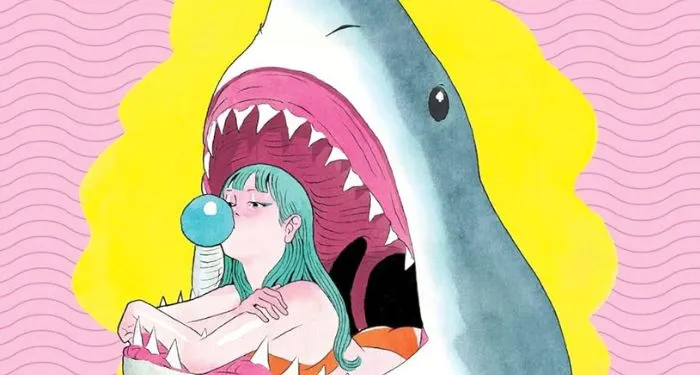



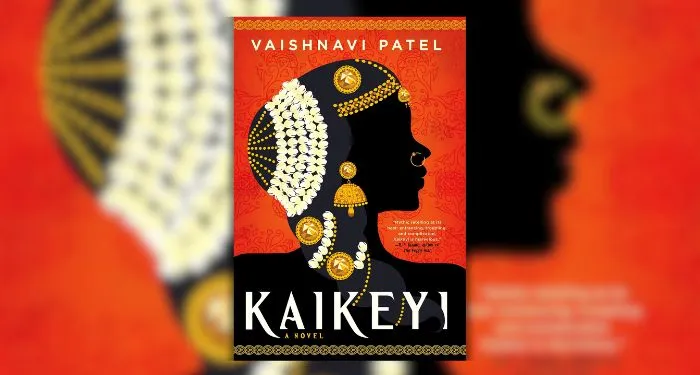


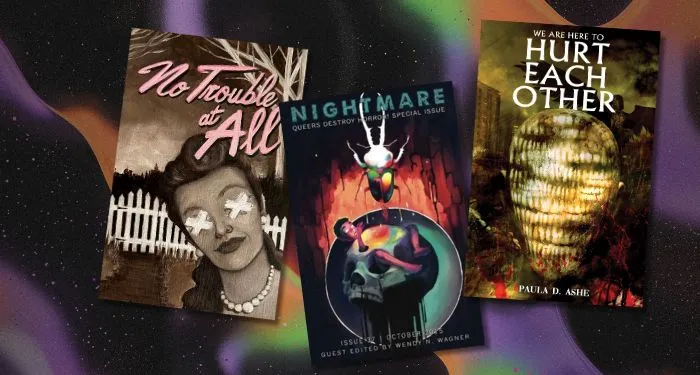
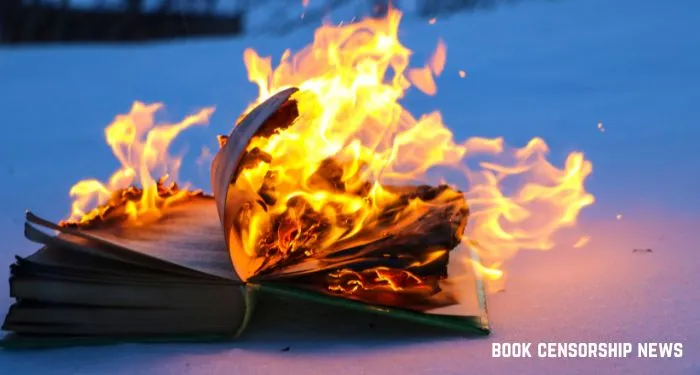
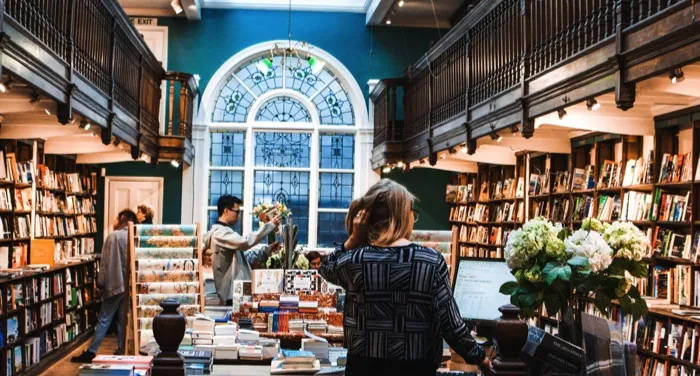
 English (US) ·
English (US) ·